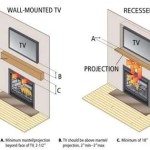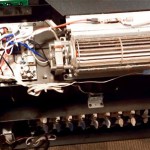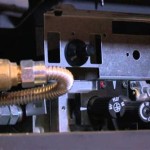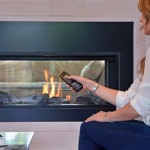Installing Gas Logs in a Masonry Fireplace
Installing gas logs in a masonry fireplace can transform a traditional fireplace into a modern and convenient heating source. Gas logs offer several advantages over traditional wood-burning logs, including ease of use, increased efficiency, and reduced mess. However, this project requires careful planning and adherence to safety regulations. This article will guide you through the process of installing gas logs in a masonry fireplace, covering essential steps, safety considerations, and potential challenges.
Assessing the Fireplace and Determining Suitability
Before embarking on the installation, it's crucial to assess the fireplace and ensure its suitability for gas logs. This involves verifying the following factors:
- Fireplace Size and Dimensions: Gas logs require adequate space for proper ventilation and combustion. Measure the fireplace's width, height, and depth to ensure sufficient clearance for the logs and their heat output.
- Flue Size and Functionality: The fireplace's flue must be of adequate size and in good working condition to effectively vent combustion byproducts. A qualified professional should inspect the flue to ensure it meets safety standards.
- Firebox Condition: Inspect the firebox for any cracks, damage, or deterioration. Any repairs or restoration should be completed before installing gas logs.
- Existing Gas Line: Determine if a gas line already exists near the fireplace. If not, a qualified plumber will need to install a gas line to the fireplace location.
Planning and Preparation
Once the fireplace is deemed suitable, the next step is planning and preparation. This involves:
- Choosing the Gas Logs: Gas logs come in various sizes, styles, and heating outputs. Select logs that are appropriate for the fireplace's size and desired heating capacity. Consider realistic expectations regarding heat output, as gas logs typically provide less heat than a wood-burning fireplace.
- Gas Log System Components: Aside from the logs themselves, the gas log system will include a gas valve, a burner system, and a pilot light. These components must be compatible and meet local building codes.
- Permits and Inspections: Depending on local regulations, permits may be required for gas log installation. Schedule any necessary inspections before proceeding with the installation.
- Safety Equipment: Assemble the necessary safety equipment, such as a fire extinguisher, gloves, and safety glasses, before starting the installation process.
Installation Process
The installation process involves several key steps:
- Installing the Gas Line: If a gas line doesn't already exist, a qualified plumber must install one to the fireplace location. The gas line should be sized appropriately to accommodate the gas logs' heating output and follow all local plumbing codes.
- Installing the Gas Valve and Burner System: Install the gas valve and burner system according to the manufacturer's instructions. Ensure that these components are securely mounted and properly connected to the gas line. The burner system must be positioned appropriately to allow for even distribution of heat.
- Installing the Gas Logs: Position the gas logs in the firebox according to the manufacturer's recommendations. These logs are designed to simulate the look of real wood but are made from ceramic or other fire-resistant materials. Ensure that the logs are centered and properly spaced to allow for adequate airflow.
- Connecting the Pilot Light: Connect the pilot light to the burner system and ensure it is functioning correctly. The pilot light provides a continuous flame that ignites the main gas burner when the gas logs are turned on.
- Testing and Troubleshooting: Once the installation is complete, test the gas logs to ensure they operate correctly. Check for gas leaks, proper flame distribution, and potential issues with the ignition system. If any problems arise, consult the manufacturer's instructions or contact a qualified professional.
Safety Considerations
Safety is paramount when working with gas appliances. Adhere to the following safety precautions:
- Ventilation: Ensure adequate ventilation in the room and the fireplace. The combustion process produces carbon monoxide, and proper ventilation is essential to prevent dangerous buildup.
- Flue Inspection: Regularly inspect the flue for obstructions or damage that could impede proper ventilation. A qualified professional should perform these inspections.
- Gas Leaks: Be vigilant for gas leaks. If you smell gas, immediately turn off the gas valve and evacuate the house. Contact a qualified professional to investigate and repair any leaks.
- Fire Safety: Always use caution when using gas logs and keep a fire extinguisher readily available. Never leave the logs unattended while they are operating.
Installing gas logs in a masonry fireplace can provide a convenient and efficient alternative to traditional wood-burning logs. By following the steps outlined in this article and prioritizing safety, you can enjoy the warmth and ambiance of a gas fireplace.

Convert A Wood Fireplace To Gas Full Service Chimney

How To Put In A Gas Log Set For Fireplace

How To Put In A Gas Log Set For Fireplace Ron Hazelton

Here S How Install A New Fireplace Surround And Gas Logs

Gas Log Sets Fireplace Logs Chimcare

We Install Gas Logs Amarillo Tx West Chimney

Gas Logs Doors Installation In Ma Ri Anderson Fireplace

Why Is It Important To Get My Gas Fireplace Logs Clean Regularly
.png?strip=all)
How To Install A Log Lighter Fireplace Gas Starter Pipe

Gas Fireplace Log Set Installations In Dc
Related Posts








